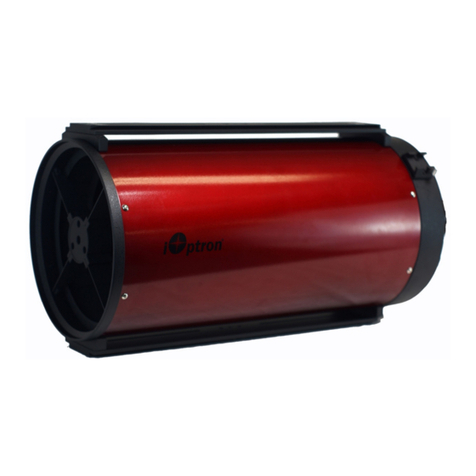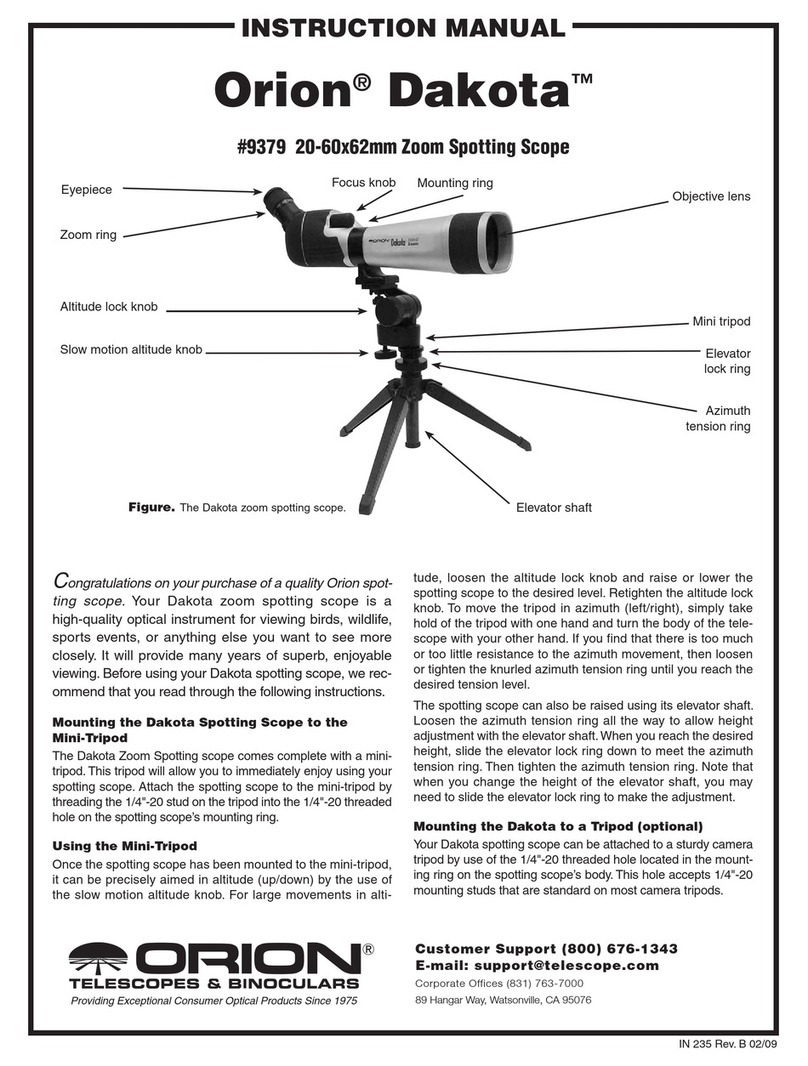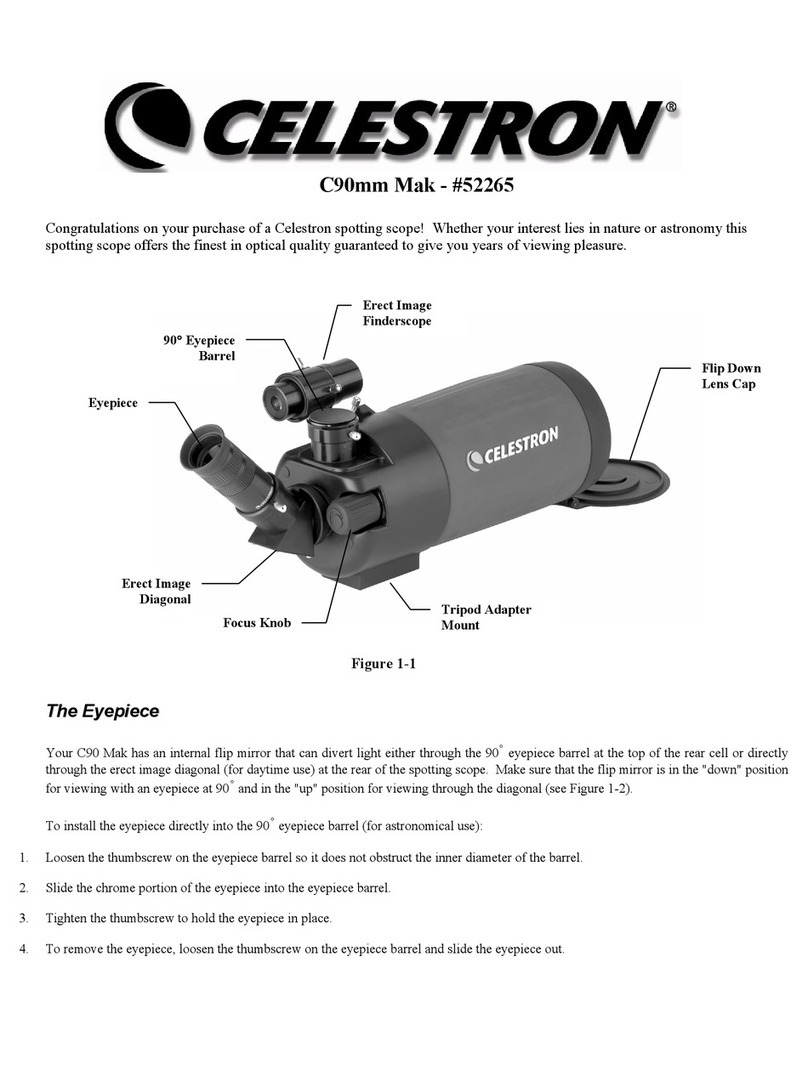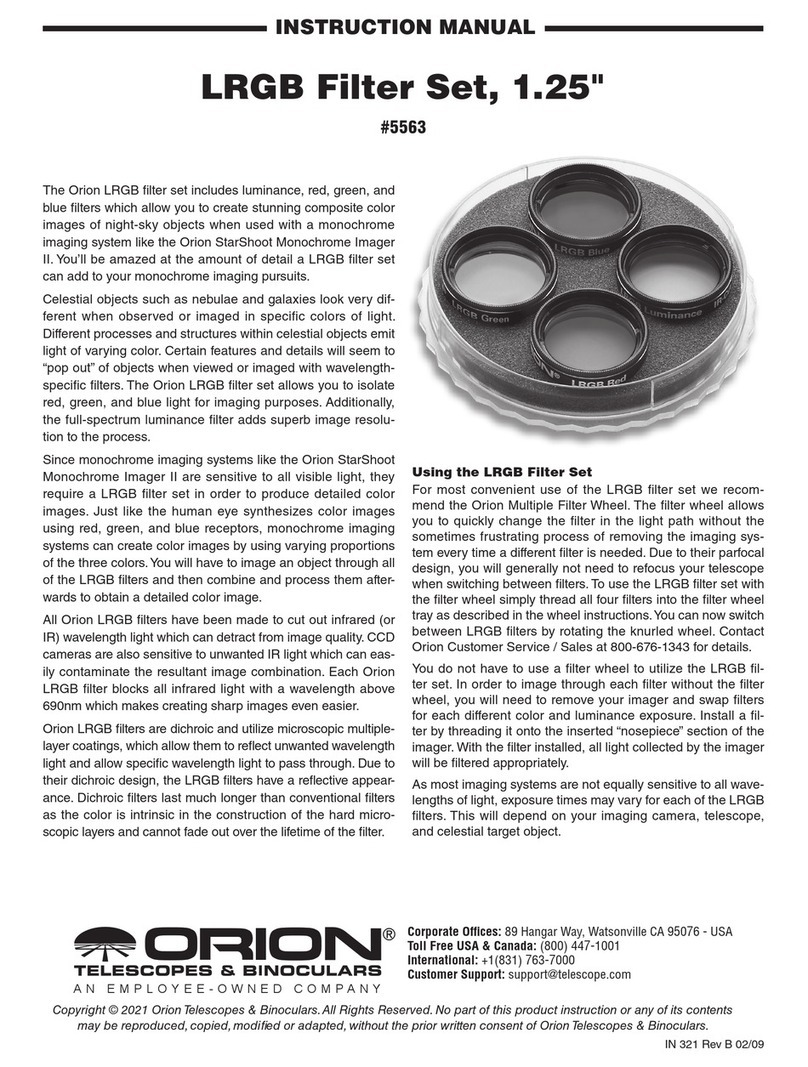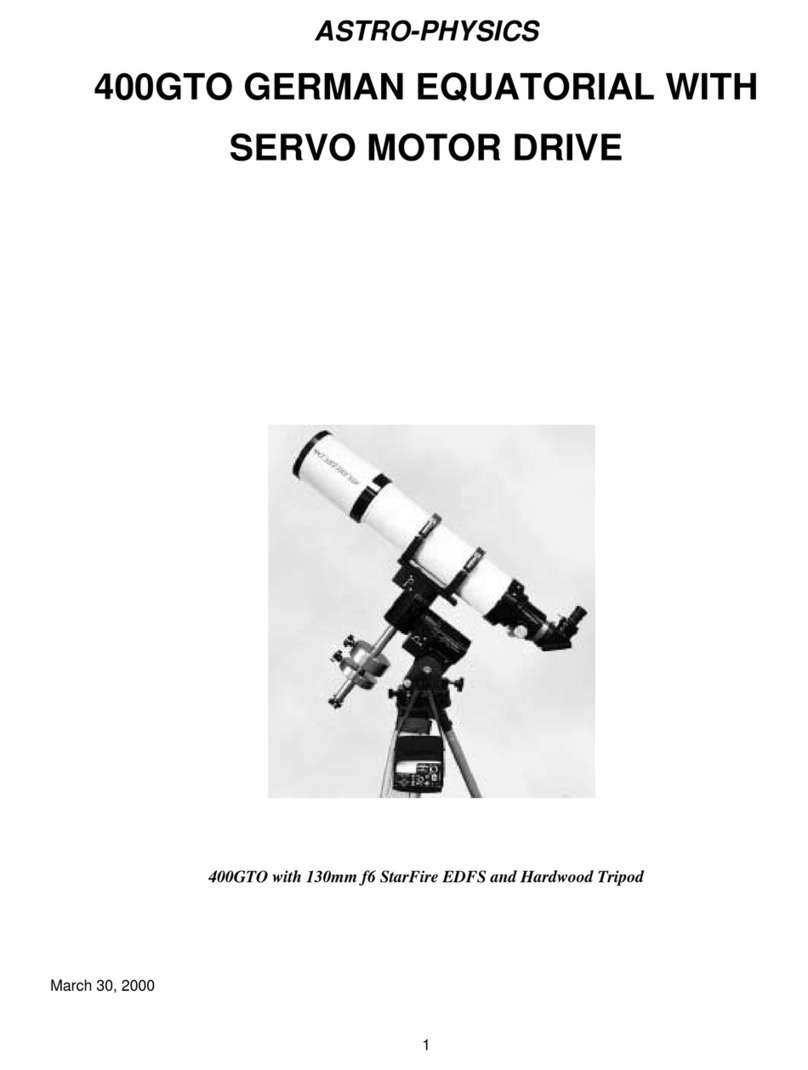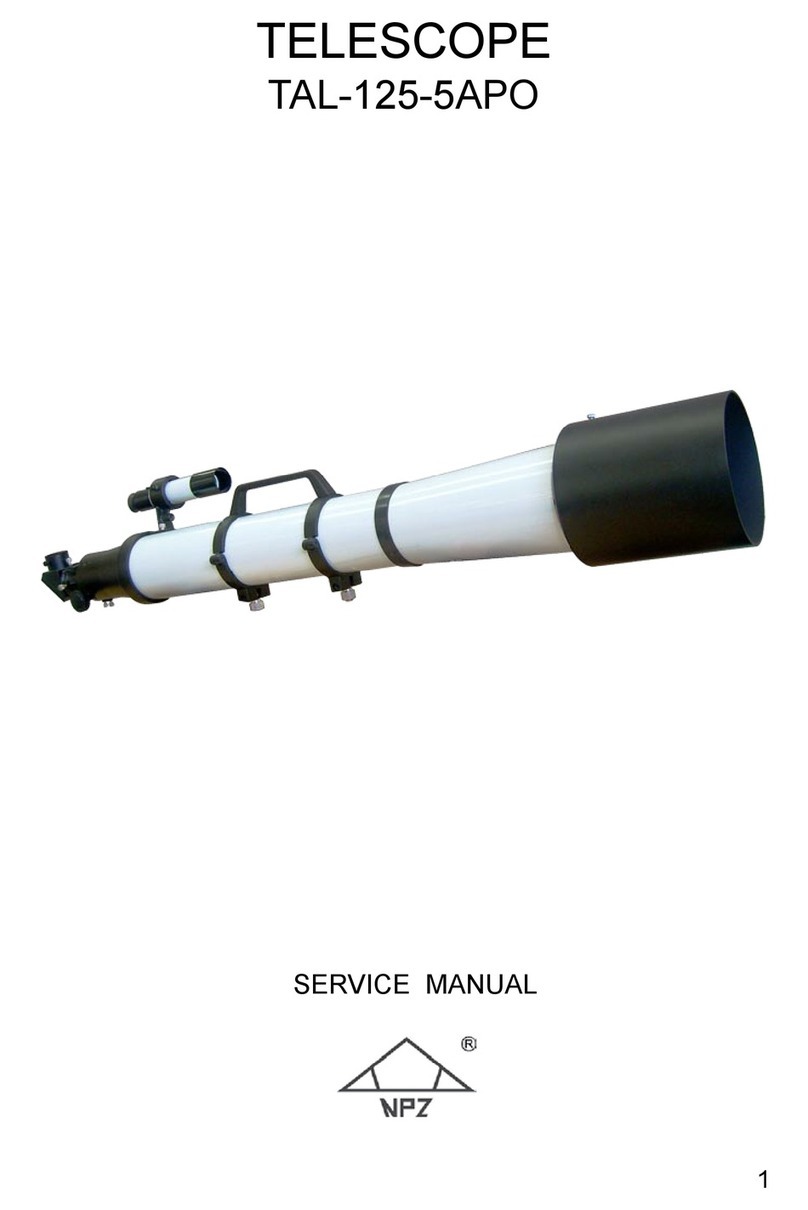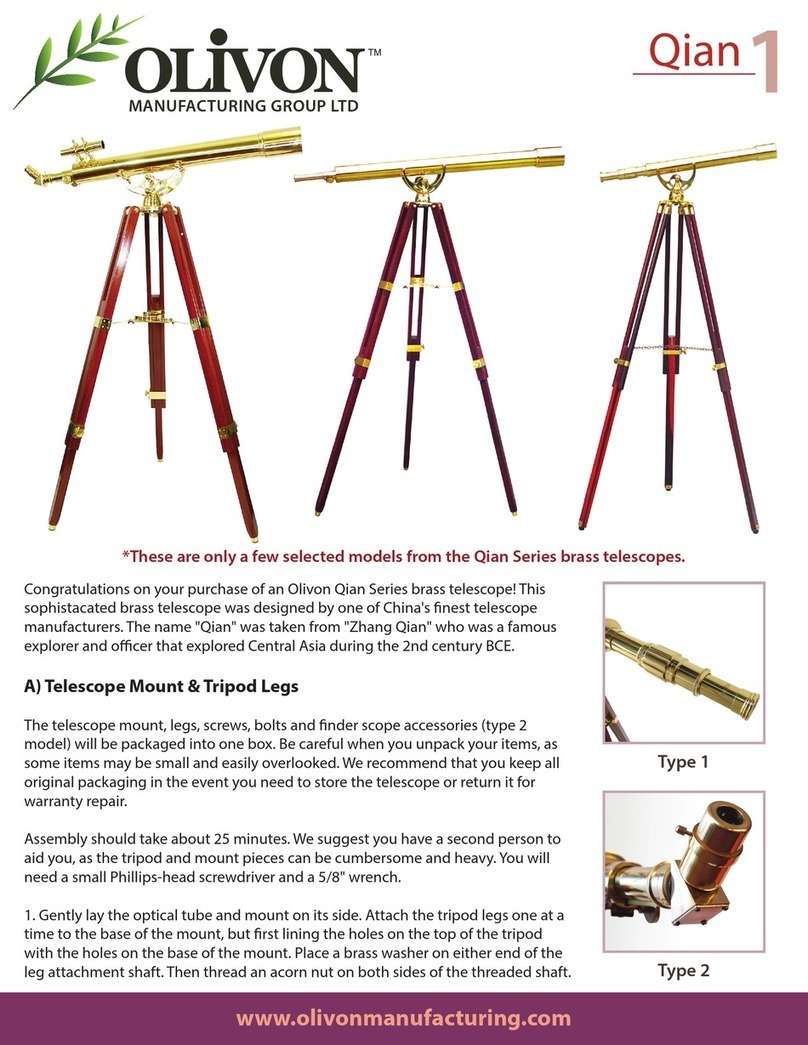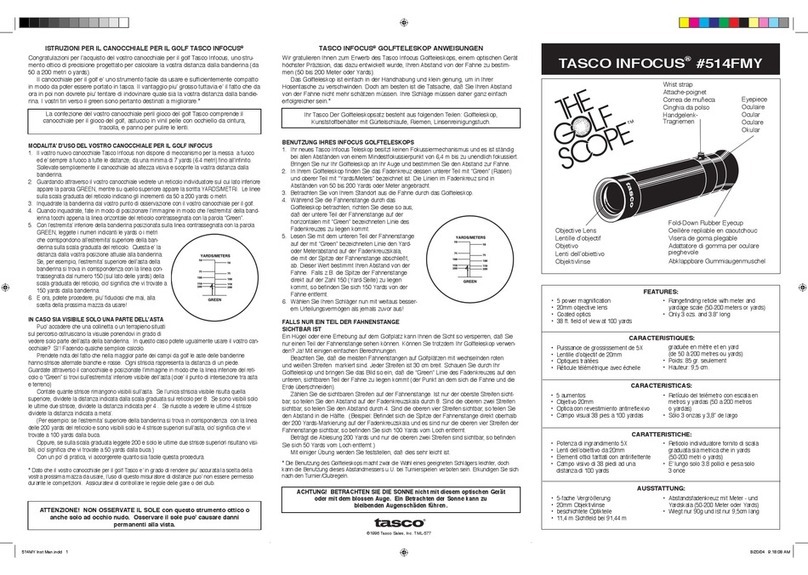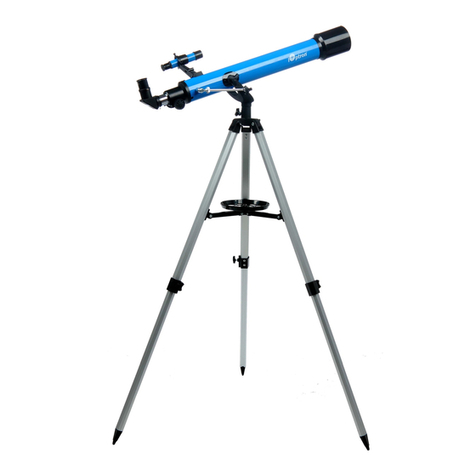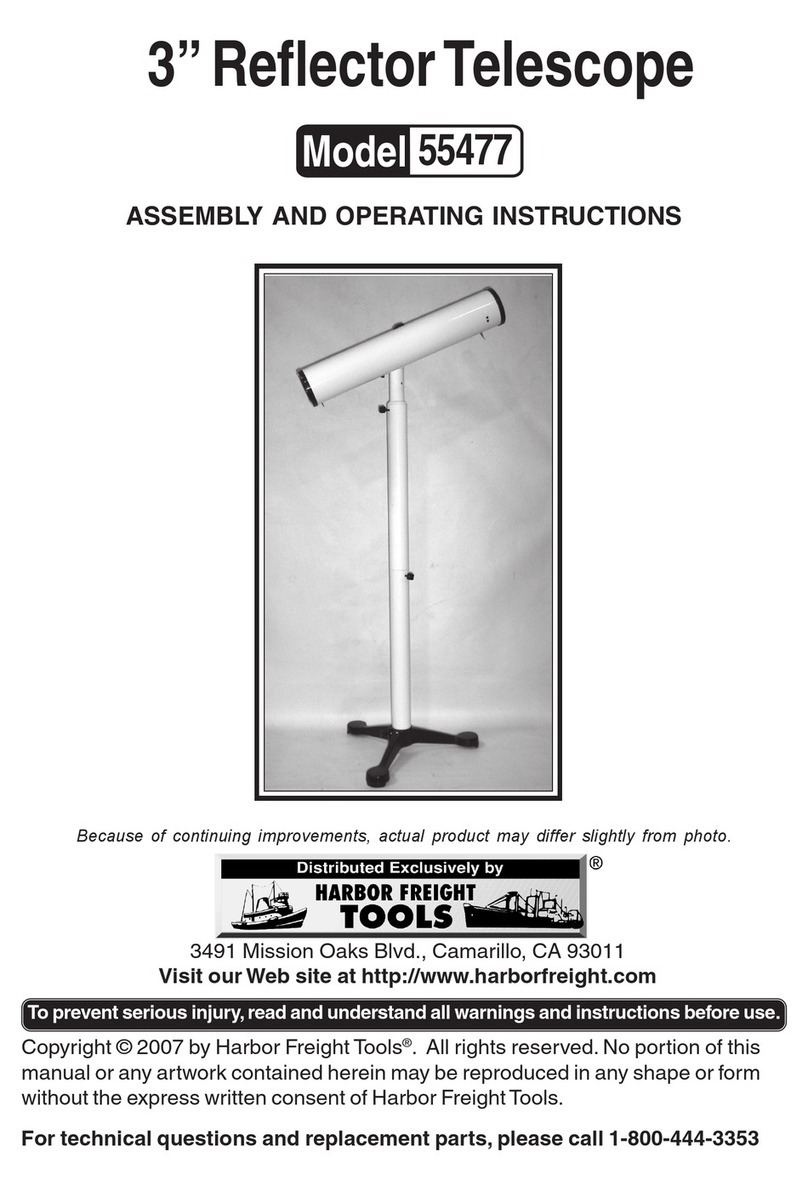17
to cover the seven principal stars that delin-
eate the figure of Orion.
If we wish to be a little bolder we can relate
the span of our outstretched hand to actual
angular measure. It so happens that the span
of our hand corresponds to just over 20
degrees (the symbol for degree is°), while the
length of our thumb is about 7°. This latter
figure conveniently matches the field of view
of a low power pair of binoculars of the 7x50
or 8x30 variety (incidentally, all binoculars are
labelled XX x YY, where XX is the magnifica-
tion and YY is the diameter of the from lenses
in millimetres).
The length of a thumb at arms length – 7°–
it's not a great deal, is it? If you have a pair of
binoculars then perhaps now you can appre-
ciate just how small an area of sky is revealed
to you at any one time, and why it can be a
problem finding objects. Contrast this with
the field of view of a typical astronomical tele-
scope which is in the region of half a degree,
or the apparent width of the Full Moon. It may
surprise many of you to discover that the
angular size of the Moon is so small (it can be
covered by the equivalent of your little finger
nail at arms length) – the proverbial man in
the street would probably say that the Moon
is as big as tennis ball or a small plate. If you
don't believe me, try it!
Back to the constellations and naked eye
viewing. Once we are confident that we have
located, say, Orion (hint: the three so-called
'belt stars' at the centre of the pattern are the
real giveaway), then we can use the figure as
a stepping stone to the adjacent constella-
tions. For example, just over a handspan
above the belt of Orion brings you to the
prominentorangestar Aldebaran (pronounced
'Al-deh-bah-ran', which means "follower" in
Arabic)in the constellation ofTaurus,theBull.
With Orion's belt low to the south-east, we
can move one and a halfhand spansto the left
parallel to the horizon to encounter the bright
star Procyon (pronounced 'Pro-sigh-on') in
theconstellationofCanis Minor, theLesserDog.
A further hand span to the upper left brings
you to the celestial twins of Gemini, Castor
and Pollux.
Another very familiar pattern visible through-
out the year is the constellation of Ursa Major,
or the Great Bear. Also known as the 'Plough'
or the 'Big Dipper', the seven stars that com-
prise this easily identified pattern lie low to
the northern horizon in winter months. Like
Orion, the main part of this constellation sub-
tends about the width of an outstretched hand
at arms length. In this fashion you can use the
prominent seasonal star groups as a kind of
framework, then you can fill in the fainter con-
stellations as your knowledge grows – and
rest assured it will.
Broadening your horizons: Assuming that
you feel confidentin identifying the starsvisible
in any particular season, preferably with the
help of members of your local astronomical
society and the star charts of a magazine,
then you may have already been introduced to
the pleasures of binocular or telescopic
astronomy. Having 'served yourapprentiship',
so to speak, you will be in a better position to
appreciate thetrue potentialofanygivenoptical
instrument. As was mentioned earlier, the art
of observing is a skill to be acquired with con-
stant practice, and in some individuals this
faculty has been developed to an extraordi-
nary degree such that they can perceive a
celestial interloper such as a nova or comet at
a glance.
Streetlights and light pollution: If you are
fortunate to live in a rural area that is not
plagued by streetlighting, then your view of
theheavenswillnotbeimpaired.However, for
the observer living in city or suburban areas
the subtle phenomena of the skies are largely
lost – this is why the clear, dark skies of coun-
try areas are such a revelation to many town
dwellers: there is so much to see when the
veil of light pollution has been lifted! So how
can we alleviate the problem? Other than lob-
bying your Local Authority or private compa-
nies responsible, it is possible to invest in




















